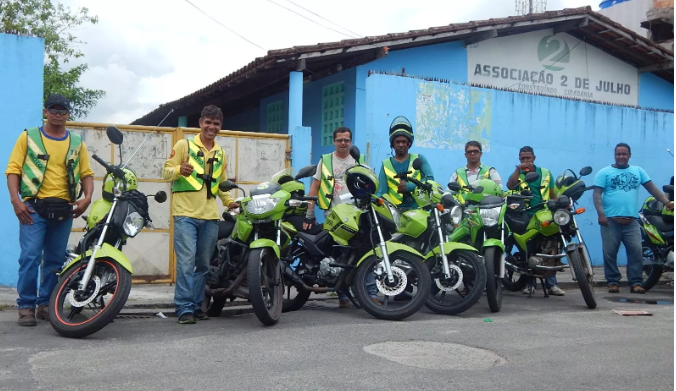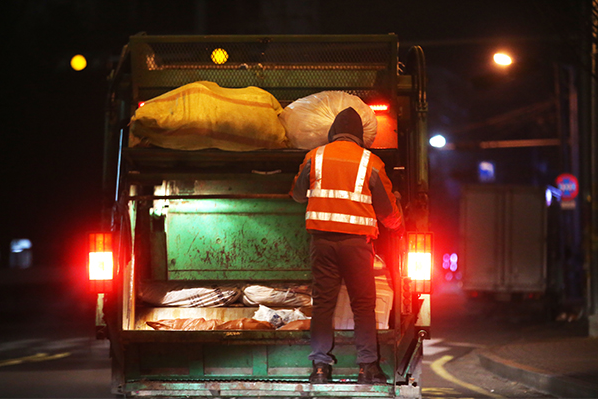At the motorcycle taxi station set up eight years ago by Marisérgio Melo, 33, in Vale das Pedrinhas, rules must be followed. No sandals, no working without a helmet or no reflective vest. The price of the race is fixed: within the neighborhood, any route costs $ 4; further afield, it increases. “Even Iguatemi gives $ 10,” he says. And the ten motorcycle taxi drivers who work there need to walk the line. “You can’t drink, you can’t get high. If you take a drug to give someone takes eight days suspension,” says Marisérgio.
He and his colleagues are among the approximately 5,000 motorcycle taxi drivers in Salvador who have been waiting for years to regulate the activity. If the executive bill, which is due to reach the House on Wednesday, is passed, they will have to comply with new rules.
The MAIL had first-hand access to the points discussed by the Municipal Mobility Secretariat with the category for regulation. Among them, highlights for the maximum age of five years of the motorcycle and minimum of 21 for the driver, the standardization of the vehicle in yellow, two years of qualification, training, and a limited number of permits: 3 thousand.
The rules, which follow the authorization of passenger transport on motorcycles in the city, will be discussed between the city and the category definitively within 180 days after approval by the legislature, during which there will be further discussions in public hearings. From there, professionals will have a deadline to comply with the rules and then start working legally.
The initial idea is for Salvador to authorize the accreditation of 3,000 riders – an average, according to IBGE data, of one motorcycle taxi driver per 1,000 inhabitants. “We are talking to the three associations in the city. Today, 5,000 motorbikes operate because people are operating without a license,” says Semob holder Fábio Mota.
The motorcycle taxi drivers that will be accredited, if the law is approved, will be distributed between 200 and 300 motorcycle taxi points that will be created, subdivided by areas. Each point will have a leader, kind of area delegate, who is responsible for interacting with Semob. Motorized taxi drivers registered at one point will not be able to act in others. Nevertheless, the user of the service can perform long runs if desired.
The motorcycle taxi driver Luiz Carlos de Souza, 56, who has been working for almost two years at a point in Rio Vermelho, says most races are in the region itself. “We take the people who jump from the bus to the college, to the slopes that go to the Northeast, Santa Cruz, where the buses don’t go up,” he says.
Even so, some do longer runs. Some of the professionals who work in Vale das Pedrinhas report that they have already races to neighboring cities.
The president of the Bahia Motorcyclists, Motoboys and Mototaxists Union, Henrique Baltazar, said that he discussed points of the project with the portfolio and with the Chamber Commission and Transportation, chaired by Councilor Euvaldo Jorge. “If the regulation is made according to the negotiation we made, we accept. What can’t be a lot of change,” he says.
According to Baltazar, before talking about 3,000 permits, the city had stipulated 3,500 licenses. “This number of 3,500 is reasonable for us because we know that today there are 5,000 runnings, but many people will not fit the requirements,” he admits.
Osvaldam Tupyassu, president of the Association of Motorcycle Riders in Salvador, finds the number insufficient and draws attention to fake motorcycle taxi drivers. “We know there are many who say they are, but not really, do not depend on it as a profession. I think it’s not enough, but if you have the regulation, you can ensure it,” he assumes.
Also according to Tupyassu, there have been talks with councilors who have studied the situation in other cities that have already regulated the activity.
As with vehicles that are allowed to drive as taxis, motorcycles will also have to be standardized. They will have yellow paint, identification as a motorcycle taxi and will need to have a maximum of five years of use. They should also have between 125 and 160 displacements, plus safety equipment. The Taxis and Special Transport Coordination, linked to Semob, will be responsible for this standardization.
They will be positioned so as not to disturb bus or taxi stops. “We are mapping and establishing the points according to the demand of each location. Regulation has to standardize and make them complementary, not one competitor of another,” explains Fábio Mota.
Henrique Baltazar, from Sindimoto-BA, says that the points need to be close to the bus – after all, they often catch passengers who jumped or take a bus afterward. He also charges that permits be issued in the name of the motorcycle taxi driver and allowed to work with a motorcycle that is in someone else’s name, such as a relative. “Sometimes the motorcycle taxi driver doesn’t have the bike in his name. If this issue is resolved, the project is not so bad,” says Baltazar.
Even before regulation, there are already standardized motorcycle taxi drivers. This is the case of those who work with the shirt of the Association of Professional Motorcyclists of the State of Bahia. Gibson Campelo, 43, started running standardized in February this year. “When the customer sees it, they call us. The inspectors also know that we are serious, we have a document, everything is fine,” he says. On Gibson’s shirt, in addition to a hallmark and Semob, is his code with the association.
House must vote bill in the second half
According to the Mayor, City Councilor Paulo Câmara, if the Executive bill reaches the House later this April, the matter is expected to go to a plenary vote in the second half of this year.
“This is a project that has been guided by Casa for almost two years. We will wait for this project that will come from the Executive, a partnership, which is already more or less shaped according to what the House has been discussing as well. When the bill arrives, the House will propose four or five public hearings to debate and put to the vote starting in the second half,” he said.
For the president, because 2016 is an election year, the situation should only be defined towards the end of the year. “If it wasn’t for the election year, we would do that before,” he said. According to the House, the bill will not immediately go to the vote because councilors will prioritize, in May and June, the vote on the Master Plan for Urban Development.

